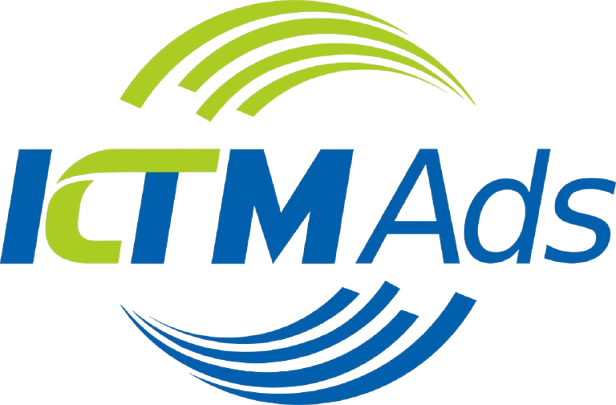When it comes to digital marketing, one of the most frequently asked questions is about the cost of running Facebook ads. Many advertisers wonder how much they should expect to spend to achieve effective results. The cost of running Facebook ads can vary depending on several factors, such as your target audience, bidding strategy, and campaign objectives. In this article, we will explore these factors and provide valuable insights on how to manage your ad spend efficiently while maximizing the impact of your Facebook campaigns.
<h2″ style=”text-align: justify;”>How to determine ad costs?
The cost of advertising on Facebook varies for each business, depending on the industry and financial capabilities. Below are three key factors that help you determine the appropriate budget for your ad campaign:
Bid price
The bid price is the amount you’re willing to pay for each impression, click (CPC), or specific action you want (CPA). The higher the bid price, the greater the likelihood of your ad being shown to your target audience.

Daily budget
The daily budget is the maximum amount you want to spend in one day for your ad campaign. Facebook will automatically allocate the cost to ensure it does not exceed this limit, allowing you to effectively control your daily ad spend.
For example, if you set a daily budget of $20, Facebook will optimize the display of ads within this limit while ensuring the best performance.
Lifetime budget
A lifetime budget is the total amount you are willing to spend on a campaign over its entire duration. This option is suitable for long-term campaigns where you want to distribute the budget evenly.
For example, with a lifetime budget of $400 for a 10-day campaign, you can set it to spend approximately $40 per day. This helps you optimize your budget while ensuring the campaign achieves the desired goals.
5 basic types of advertising costs on Facebook
Cost Per Click
CPC (Cost Per Click) is the cost you pay for each time a customer clicks on your ad. This is a popular option when businesses want to drive traffic to their website or a specific landing page.
You are only charged when a customer clicks on your ad. The cost for CPC is around $1.68 per click, depending on the industry and competition.

CPL or Cost Per Like
CPL is the cost incurred when a customer clicks the “Like” button on your ad page. This method is suitable for goals such as increasing followers and boosting engagement with the business’s Facebook page.
This cost is only charged when a like is received from a customer. The average cost is around $0.12 – $0.16 per like.
CPM or Cost Per Mille (Cost Per Thousand Impressions)
CPM is the cost you pay when your ad reaches 1,000 impressions on Facebook. This type is suitable for brand awareness campaigns or when you want to reach a broad target audience.

This cost is calculated based on the number of times the ad is displayed. The average cost for CPM is around $8.7 per 1,000 impressions.
CPA or Cost Per Action
CPA is the cost incurred when a customer takes a specific action, such as signing up, downloading an app, or making a purchase after interacting with an ad. This cost measures the direct effectiveness of the ad, making it suitable for performance-focused campaigns.
The average cost for CPA is around $19.68 per specific action.

CPV or Cost Per View
CPV is the cost you pay for each view of your video ad. Facebook counts a view when a user watches at least the first 3 seconds of the video. This model is especially suitable for campaigns that aim to deliver messages through video content.
The cost is based on the number of views, with the average price ranging from $0.01 to $0.15 per view.
Latest 2025 advertising costs by industry
With the rapid growth of social media, Facebook remains the leading advertising platform, attracting businesses from various industries. However, the cost of advertising on Facebook is not fixed and varies depending on the business sector, target audience, and the advertising strategy of each company. Below is the updated table of Facebook advertising costs by industry for 2025:
|
Industry |
CPLPV (Cost Per Landing Page View)) |
CTR (Click-Through Rate) |
Cost/Result |
|
E-commerce |
$1.45 |
1.88% |
$25.96 |
|
Education |
$7.54 |
0.53% |
$64.45 |
|
Education Technology |
$3.27 |
0.65% |
$4.68 |
|
Entertainment |
$1.00 |
3.09% |
$1.01 |
|
FinTech |
$3.05 |
0.50% |
$0.58 |
|
Hotels/Technology |
$7.15 |
0.30% |
$0.04 |
|
Professional Training |
$6.26 |
0.68% |
$0.46 |
|
Transportation |
$309.22 |
0.13% |
$9.39 |
|
Average |
$3.68 |
0.71% |
$0.29 |
What factors determine advertising costs?
Target audience
The target audience group directly affects advertising costs. A broad target will increase the budget without delivering the expected results. On the other hand, targeting specifically and building a clear customer persona helps improve campaign effectiveness and reduce costs.

Industry and business sector
This factor plays an important role in determining advertising costs. Highly competitive industries such as finance, insurance, and consumer services typically have the highest advertising costs.
For businesses in these sectors, creating high-quality, engaging, and competitive ad content will help optimize costs. Additionally, it’s important to avoid advertising in restricted or prohibited industries to prevent the risk of account deactivation.
Ad quality
Ad quality is a factor that directly impacts the Relevance Score on Facebook, which in turn affects advertising costs. An eye-catching ad with engaging content and precise targeting will help improve campaign effectiveness and reduce costs.
Ad placement
Facebook offers various ad placement options, including the News Feed, Stories, Instagram, and the right column. Advertising costs will vary depending on the placement selected by the advertiser. For example, ads on Stories or Instagram may have different pricing compared to ads in the News Feed.

Advertising objectives
Objectives such as increasing conversions (e.g., purchases, service sign-ups) usually cost more than objectives aimed at building brand awareness (e.g., likes, shares, comments). Clearly defining campaign goals helps businesses allocate the budget effectively and achieve the desired results.

Competitors
Facebook Ads operates on an auction-based system, where businesses compete to reach the same audience. When there are too many competitors in the same industry or target audience, advertising costs tend to rise. Therefore, businesses need to focus on optimizing content and selecting a suitable bidding strategy to keep costs as low as possible.
Ad bidding
Facebook offers two bidding options: manual and automatic. Manual bidding allows businesses to control the amount they pay for each result, but there is a risk of increasing costs if the bid is set too high. On the other hand, automatic bidding helps Facebook optimize ad delivery, making it ideal for businesses that want to reduce costs while still achieving high performance.

Advertising budget
The budget set by a business on a daily, monthly, or campaign basis will affect the costs. A larger budget provides more flexibility for testing and optimizing ads, but this doesn’t mean that a smaller budget can’t deliver good results. By optimizing the budget and targeting the right audience, businesses can achieve effectiveness without overspending.
Time of year
Advertising costs often fluctuate significantly during major holidays or peak shopping seasons such as the Lunar New Year, Black Friday, or Christmas. During these times, competition between businesses increases, leading to higher ad costs. To save on costs, businesses should consider adjusting their advertising strategy during these periods or choose less competitive times.
Important tips for optimizing advertising costs
To optimize Facebook ad costs while ensuring campaign effectiveness, you should pay attention to the following key points:
- Choose the right campaign objective: Optimize ads according to the right goal to reach the correct audience and reduce the cost per result.
- Narrow the target audience: Target more specifically to reduce competition, but don’t narrow it too much to avoid missing potential customers.
- Reduce ad frequency: Monitor ad frequency to avoid “ad fatigue,” update content regularly, and set frequency limits.
- A/B Testing: Test ad variations to find the most effective version and optimize costs.
- Improve post-click experience: Ensure the landing page is fast, mobile-optimized, and has a clear call-to-action.
- Use retargeting: Focus on users who have interacted with your brand to increase conversion rates and reduce costs.
If you’re unsure about how to optimize costs and improve ad performance on Facebook, let KTM Ads – rent Facebook ads account be your partner! With a team of experienced experts and creative thinking, we are committed to providing the best solutions for your brand.
> See more related articles about Facebook Ads written by KTM:
Types of Facebook ad campaigns
How to add an ad account to Business Manager

